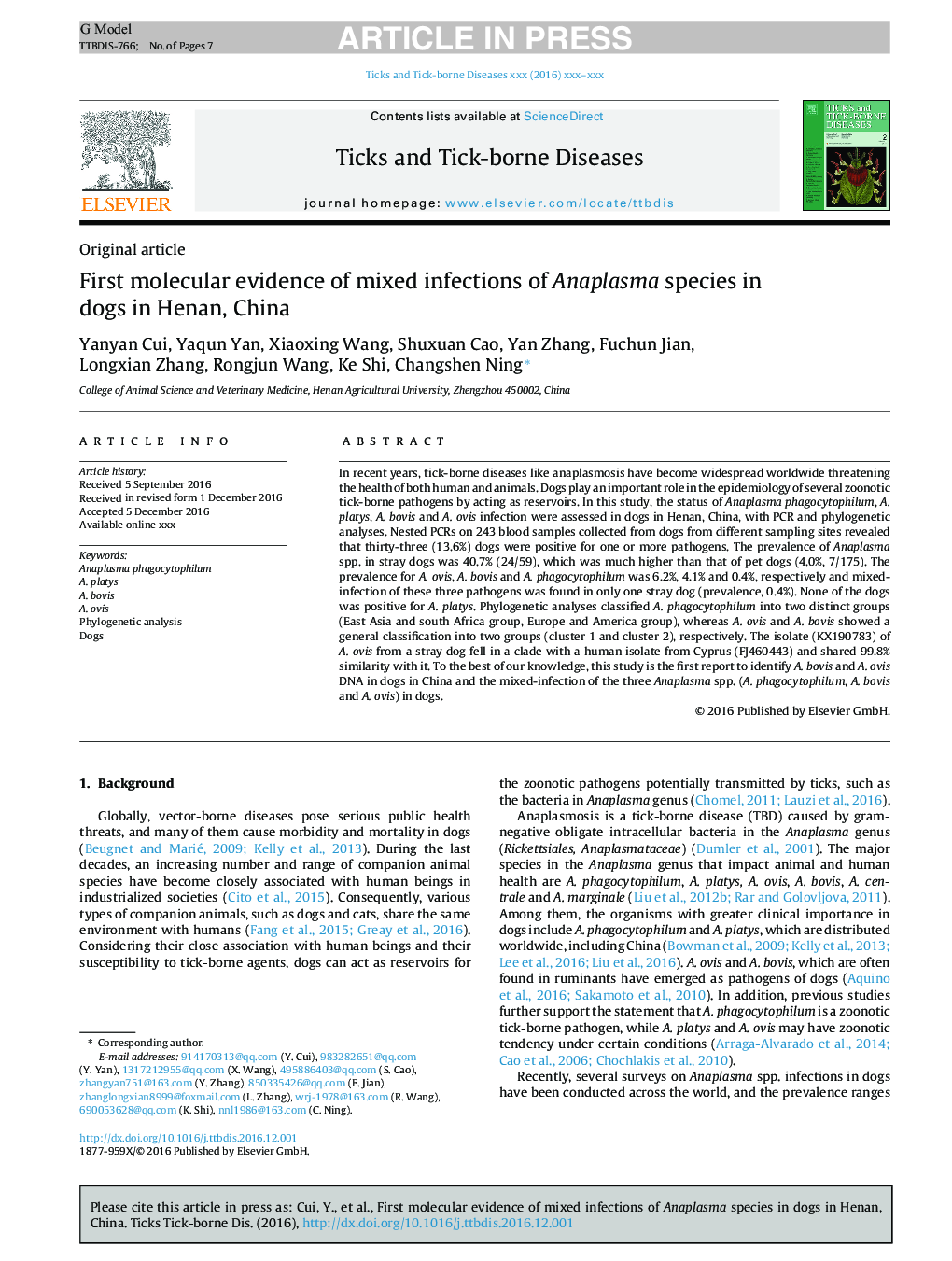| Article ID | Journal | Published Year | Pages | File Type |
|---|---|---|---|---|
| 5546481 | Ticks and Tick-borne Diseases | 2017 | 7 Pages |
Abstract
In recent years, tick-borne diseases like anaplasmosis have become widespread worldwide threatening the health of both human and animals. Dogs play an important role in the epidemiology of several zoonotic tick-borne pathogens by acting as reservoirs. In this study, the status of Anaplasma phagocytophilum, A. platys, A. bovis and A. ovis infection were assessed in dogs in Henan, China, with PCR and phylogenetic analyses. Nested PCRs on 243 blood samples collected from dogs from different sampling sites revealed that thirty-three (13.6%) dogs were positive for one or more pathogens. The prevalence of Anaplasma spp. in stray dogs was 40.7% (24/59), which was much higher than that of pet dogs (4.0%, 7/175). The prevalence for A. ovis, A. bovis and A. phagocytophilum was 6.2%, 4.1% and 0.4%, respectively and mixed-infection of these three pathogens was found in only one stray dog (prevalence, 0.4%). None of the dogs was positive for A. platys. Phylogenetic analyses classified A. phagocytophilum into two distinct groups (East Asia and south Africa group, Europe and America group), whereas A. ovis and A. bovis showed a general classification into two groups (cluster 1 and cluster 2), respectively. The isolate (KX190783) of A. ovis from a stray dog fell in a clade with a human isolate from Cyprus (FJ460443) and shared 99.8% similarity with it. To the best of our knowledge, this study is the first report to identify A. bovis and A. ovis DNA in dogs in China and the mixed-infection of the three Anaplasma spp. (A. phagocytophilum, A. bovis and A. ovis) in dogs.
Related Topics
Life Sciences
Agricultural and Biological Sciences
Animal Science and Zoology
Authors
Yanyan Cui, Yaqun Yan, Xiaoxing Wang, Shuxuan Cao, Yan Zhang, Fuchun Jian, Longxian Zhang, Rongjun Wang, Ke Shi, Changshen Ning,
